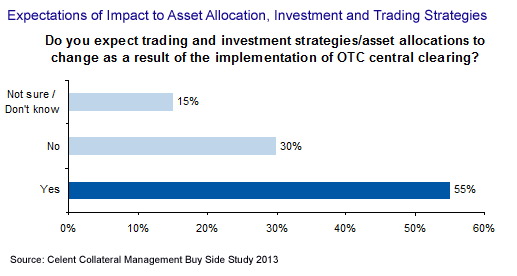Maximizing Collateral Advantage: A Survey of Buy Side Business and Operational Strategies
Abstract
It will cost the financial industry in excess of $53 billion in infrastructure and technology investments to upgrade and source new capabilities to achieve collateral efficiency and operational efficiency in a mixed clearing and collateralization environment.
In this report, based on a survey by Celent and commissioned by DTCC, Maximizing Collateral Advantage: A Survey of Buy Side Business and Operational Strategies, Celent examines the state of buy side collateral management capabilities to understand how senior executives, practitioners, and industry experts from asset managers, hedge funds, insurance asset management units, and pension funds envisage the future of their collateral operations/IT, and how their organizations are formulating strategies towards their goals.
Firms are likely to be impacted in the way they hedge and trade derivatives; more than half of institutional investors surveyed stated that market reforms would materially change their trading behavior and asset allocation activities.

“Whether or not a firm is proactive in terms of implementing the right infrastructure to manage and optimize collateral, we expect trading and investment strategies will need to change,” says Cubillas Ding, Celent Research Director and author of the report. "The differentiator between winners and losers will entail frontline strategy decisions that are enabled by timely collateral inventory information and margining operations, as opposed to firms that may face limitations on what/how/where they trade”, he continues.
A complex landscape, with a choice of derivatives regimes, is emerging. Firms’ decisions regarding which products to employ, as well as where to trade and clear, will be driven by a host of considerations. Depending on the size of their derivatives portfolios, investment strategies, and trading intensity, there will be different implications for trading profitability and costs. This study provides strategies to navigate and exploit opportunities that the emerging market regime brings.
This 30-page report contains 19 figures and one table.

